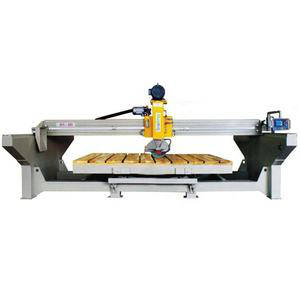The Releated Products of Marble Cutting Blade For Grinder
Marble Cutting Blade For Grinder
Table of Contents
Understanding the Core of Marble Cutting Blade For Grinder
Marble cutting blade for grinder represents a specialized tool designed to meet the rigorous demands of cutting through marble and other similarly hard materials. These blades are engineered with precision, incorporating materials and designs that ensure durability and efficiency. Whether you’re a professional craftsman or an enthusiastic DIYer, understanding the core aspects of these blades can significantly enhance your work.
Selecting the Right Marble Cutting Blade For Grinder
Selecting the right marble cutting blade for grinder involves considering several factors, including the type of material being cut, the size of the blade, and the specific features offered by different models. A high-quality blade will not only improve the quality of your cuts but also extend the life of your grinder. For instance, diamond blades are popular choices due to their ability to cut through dense materials like marble without overheating or dulling quickly.
Maintaining Your Marble Cutting Blade For Grinder
To ensure optimal performance and longevity of your marble cutting blade for grinder, proper maintenance is essential. Regular cleaning helps remove debris that can accumulate during use, which might otherwise lead to wear and tear. Additionally, storing the blade properly when not in use protects it from damage and ensures it remains sharp and ready for the next project.
Advantages of Using a Marble Cutting Blade For Grinder
Using a dedicated marble cutting blade for grinder offers numerous advantages over general-purpose blades. Firstly, they provide cleaner cuts with less chipping and cracking on the surface of the marble. This is particularly important when working on projects where precision and aesthetics are paramount. Moreover, these specialized blades often feature cooling systems that reduce heat buildup, leading to more efficient cutting processes and longer blade life.
Tips for Efficient Use of Marble Cutting Blade For Grinder

For those looking to maximize the efficiency of their marble cutting blade for grinder, here are some useful tips:
– Always start with a clean, sharp blade.
– Apply steady pressure while cutting; avoid forcing the blade as this can cause damage.
– Use water or a wet cutting system to keep the blade cool and minimize dust.
– Periodically inspect the blade for signs of wear or damage and replace if necessary.
Choosing Between Wet vs Dry Marble Cutting Blade For Grinder


When selecting a marble cutting blade for grinder, another key decision point is whether to opt for a wet or dry cutting blade. Wet blades require a continuous supply of water during operation to dissipate heat and reduce dust. On the other hand, dry cutting blades do not need water but may produce more dust and heat. The choice between wet and dry depends largely on the specific application, environmental conditions, and personal preference regarding dust management and noise levels.
Innovations in Marble Cutting Blade For Grinder Technology
Recent advancements in technology have led to the development of new and improved marble cutting blades for grinders. Innovations such as segmented rim designs, enhanced diamond segment formulas, and improved bonding techniques have resulted in blades that are faster, cooler-running, and longer-lasting than ever before. As manufacturers continue to push the boundaries of what’s possible, users can expect even better performance from their cutting tools in the future.
Request for Quotation
报错: 未找到这个表单





